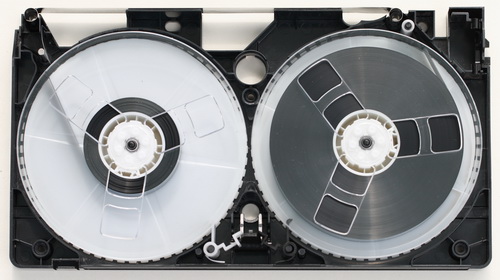
In our fast-paced world, things are changing at exponential rates and things that were once considered ubiquitous and common are becoming outdated rapidly. Our generation is considered to be “digitally native,” but even so, many of us can still rack our memories and recall the distant era of Tamagotchi and The Babysitter’s Club. Some of us can faintly recall the following things … but in 20 years’ time, we’re going to be faced with the arduous task of recalling and explaining them to our kids what they are, because they’re just not going to get it.
The “Save” Icon and Floppy Disks
Open up a word processor. Then open up an image-editing program. See that little save icon up at the top left corner? That’s the 3.5-inch floppy disk – the primary means of file transfer and storage from the 1970s to the early 2000s. Remember those? Maybe some of you more nostalgic (and older) readers can recall the days of those flat, purple discs used for storage which have since been replaced by the much smaller and more convenient USB. The days of the floppy disc are long gone, so what is it still doing as the ubiquitous save icon on almost every computer program?
The Term “Rewind” and Cassette/ Video Tapes
Similar to the “save” icon conundrum, the term “rewind” has taken on a completely different meaning than 10 or so years ago. Today, it mostly just means to go back and re-watch or re-listen to something, to play it again. This writer, however, distinctly remembers a time when video tapes (yes—tapes!) had to be physically wound back (either manually or with a video rewinder) in order to replay them. The amount of fuss made over the simple act of rewinding was unbelievable (recall the video rental stores’ urgent notices such as “to PLAY is human, to REWIND is divine), so that’s probably why the term stuck around long after the action ceased to exist.
The Publication Process
Back in the old days, many colleges offered courses on publication (and many still do, for the time being). These courses encompassed everything one needed to know about the proper routes to publication, from getting an agent to shopping your manuscripts. Years were spent learning the exact format for successful publication submission, and even after all of that, there was no guarantee of publication. With the modern integration of e-readers and the internet, getting published has never been easier; nowadays it is a simple matter of finishing your piece and uploading it to the proper online platform. You can even get paid directly and neatly cut those pesky middleman fees.
TV-Related Activities like “Sunday Morning Cartoons” and “Late-Night Television”
Before the days of pay-per-view, TiVo, and sites such as Sohu/Youku, if you really liked a particular TV show/s, your entire day could end up being planned around it. Bathroom breaks used to be planned around commercials since the TV didn’t wait for you. If you wanted to watch something, you had to commit to parking yourself in front of the TV at that particular time and day. Kids used to get up early to watch cartoons (especially on Saturday mornings), while parents used to sacrifice their sleep in order to catch late-night talk shows of the scarier (and more interesting) showings of National Geographic.
Now, it’s pretty easy to plan TV watching around the arguably more important activities in your life; with 20-minute shows such as How I Met Your Mother constantly available on-demand, the notion of time-related TV activities has become obsolete.
Every generation has its quirks, and most of them ultimately fade into nothing more than nostalgic memories for those who lived through those particular decades. However, many of them remain; some become redefined to fit into the current age, while many serve as vestigial reminders of a bygone era.
This article originally appeared in the April 2013 issue of UNIT-E. It was written by Vivian Zhang, a student at the International School of Beijing.
About UNIT-E
UNIT-E was founded in the spring of 2010 with the aim of establishing a non-profit, student-run magazine for international students in Beijing. Staffed by current students from a range of international schools, the magazine provides an amalgam of cultural tidbits, fragments of Beijing student life, and a broad spectrum of unique perspectives from a diverse group of young adults.




